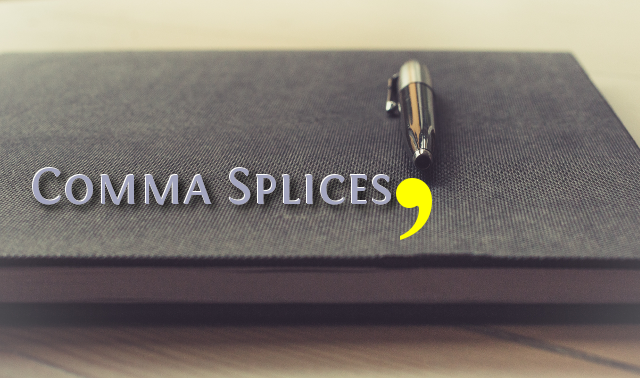How to Avoid Comma Splices

What’s wrong with this sentence (source)?
It is nearly half past five, we cannot reach town before dark.
Did you see the problem? Here it is again, with the problem highlighted:
It is nearly half past five, we cannot reach town before dark.
That comma is the problem. This mistake is called a comma splice. A comma splice is a kind of run-on sentence. We’re going to learn how to recognize and avoid comma splices, one of the most common mistakes writers make.
First, though, we need to learn about independent and dependent clauses. If you already know what they are and how to recognize them, you can skip to the next section. Otherwise, read on.
Clauses
A clause is a portion of a sentence which contains a subject and a verb. These are all examples of clauses, with their subjects and verbs highlighted:
I’m tired
That car is red
…because it’s fun
Once upon a time, there was a rabbit
Every clause is either independent or dependent.
Independent Clauses
An independent clause is a clause which can stand by itself in a sentence. In other words, if all you have is an independent clause, you have a complete sentence. Similarly, every complete sentence must contain an independent clause. Here are some examples:
Where are you?
It’s 5:30 am.
The police officer, panting with exhaustion, finally caught the criminal.
Dependent Clauses
A dependent clause, also called a subordinate clause, cannot stand by itself in a sentence; it must be paired with an independent clause. Like any clause, dependent clauses contain a subject and a verb. However, they also contain a word which subordinates them to their independent clause. “Subordinate” means to make something less important.
The following sentence contains an independent clause, followed by a dependent clause. I’ve bolded the subordinating word for you.
| Independent Clause | Dependent Clause |
|---|---|
| I like learning English | because I can talk with people from all over the world. |
Because is a subordinating word, so the clause which begins with because cannot stand by itself. This sentence is wrong:
Because I can talk with people from all over the world.
Connecting Independent Clauses
Let’s go back to our first example sentence:
It is nearly half past five, we cannot reach town before dark.
Notice that there are two independent clauses, which are closely related in subject:
| Independent Clause | Independent Clause |
|---|---|
| It is nearly half past five | we cannot reach town before dark |
When we speak, we normally say this sentence as if there were a comma between the two clauses. But when we write, most people consider it an error to separate two independent clauses with a comma.
So, how can we fix a comma splice? The easiest way is to replace the comma with either a semicolon or a period:
It is nearly half past five; we cannot reach town before dark.
It is nearly half past five. We cannot reach town before dark.
We can also add a subordinating word to turn one of the clauses into a dependent clause:
It is nearly half past five, so we cannot reach town before dark.
Since it is nearly half past five, we cannot reach town before dark.
Finally, we can often add a conjunction (such as and, or, or but):
It is nearly half past five and we cannot reach town before dark.
As you can see, avoiding comma splices isn’t hard if you pay attention. This is one of the most common writing mistakes, so you have to be careful to avoid comma splices.
Do you have any questions or comments? Please let me know in the comments below. Also, stay tuned for a future article about the times when comma splices are OK.
